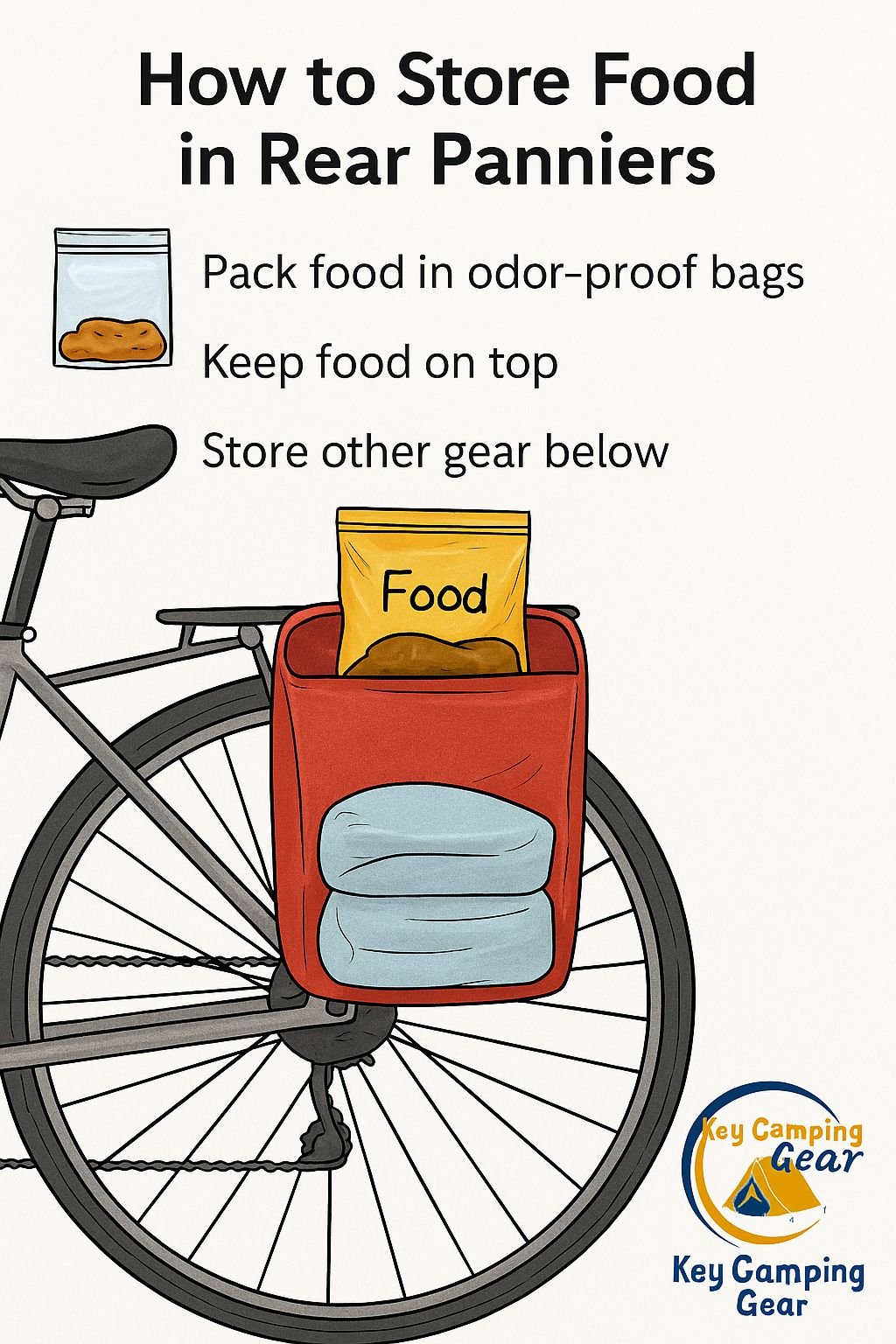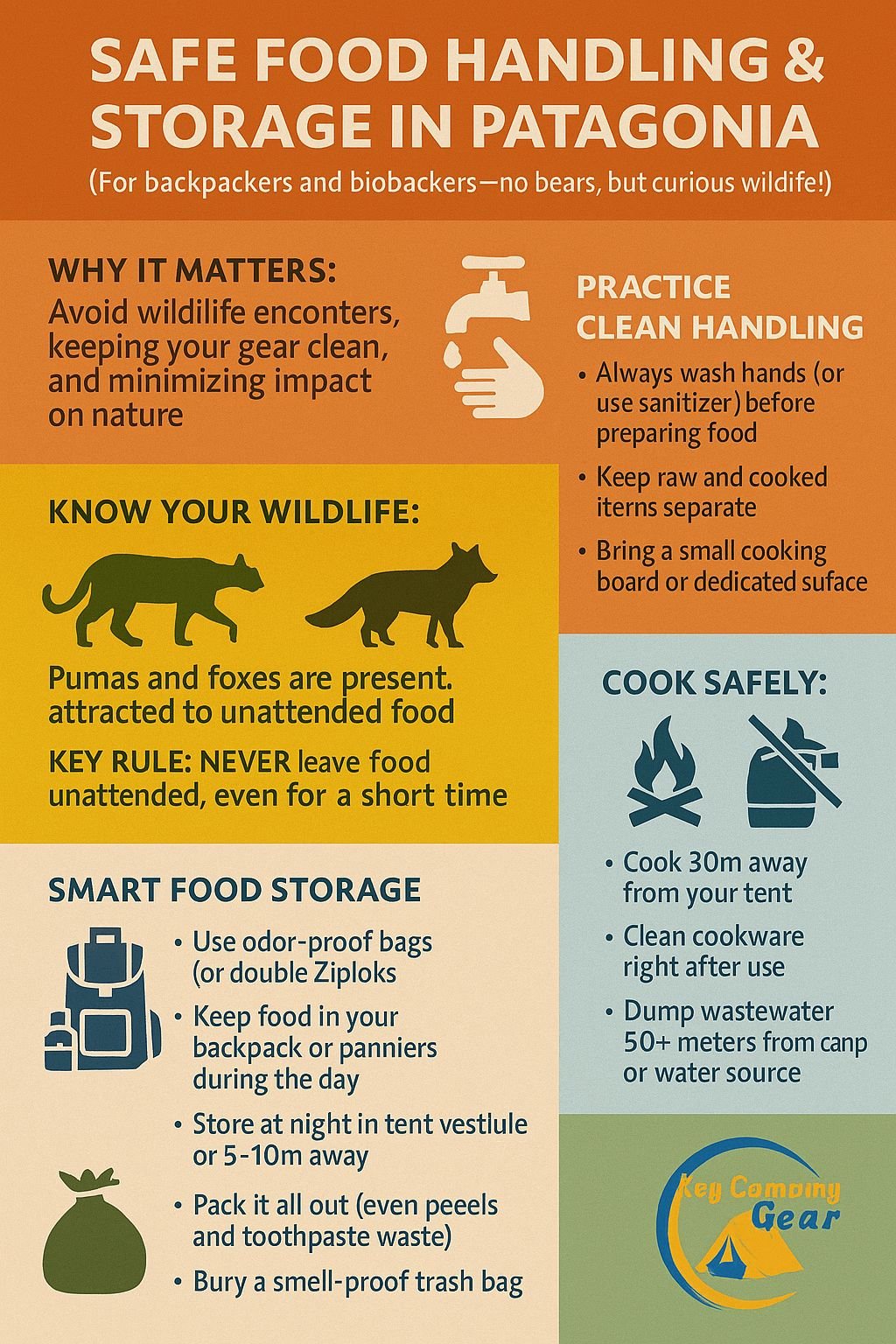Food Storage for cyclists and backpackers
Stay Fueled & Safe: Food Storage Tips for Backpackers & Cyclists
Safe Food Handling & Storage in The Carretera Austral
🥪 Why it Matters:
In remote areas like Patagonia, food safety isn’t just about staying healthy — it’s about avoiding unwanted wildlife encounters, like pumas, foxes or rodents, keeping your gear clean, and minimizing your impact on nature.
🍴 1. Practice Clean Handling
• Always wash your hands (or use sanitizer) before preparing food.
• Keep raw and cooked items separate — especially if you’re carrying meat, cheese, or eggs.
• Bring a small cutting board or dedicated surface to avoid cross-contamination.
🐾 2. Know Your Wildlife
• No bears in Patagonia, but pumas are present in some areas — though they rarely approach humans.
• 🦊 Foxes can steal food if it’s left out or poorly stored.
• Birds like chucaos, loros choroy and martín pescador may swoop down for unattended snacks!
3. Smart Food Storage
• Use odor-proof bags (e.g. Opsaks) or double Ziplocks.
• Keep food in your panniers or backpack during the day, sealed and packed high.
• At night, store your food:
• Inside your tent, in a dry bag or panniers.
• Hanging food isn’t essential in Patagonia.
4. Cook Safely
• Cook at least 30 meters away from your tent if you’re in remote areas.
• Avoid cooking in strong winds — use a windshield or sheltered spot.
• Clean cookware right after use and dump wastewater 50+ meters from camp or any water source.
5. Trash & Waste
• 🚯 Pack it all out — including tea bags, banana peels, and toothpaste waste.
• Bring a dedicated “smell-proof trash bag” to store food scraps until you find a proper bin.
• 🧻 Bury human waste at least 15–20 cm deep, 60 meters from water.


